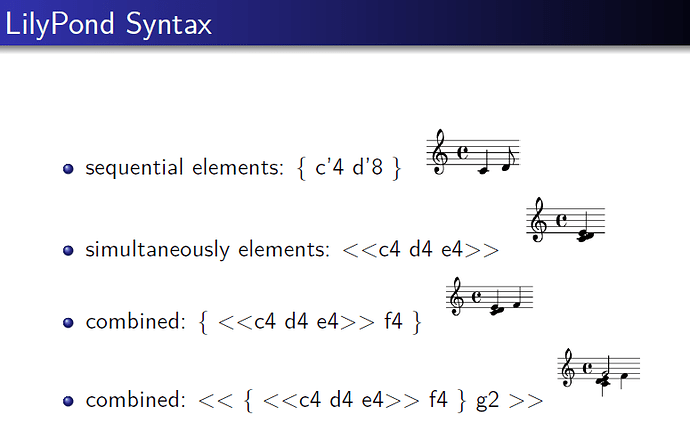@jamshark70 might want to comment here. His ddwChuklib probably has something like this in compact notation. If I understood his approach correctly, there are some “hardcoded” symbols (e.g. | for bar separation) and some defined by user for each BP e.g. x could do one thing and X another etc.
Additional comment here on the slides from the original question
There are obvious ways to do that in the base SC pattern notation (Pseq, Ppar) and even at Event level (strummed notes in an array.)
Also, I thought LilyCollider (mentioned later on in the slides) is a SC fork, but apparently I’m confusing that with some other project (that I don’t recall what it’s called right now.)
Later on it gives less trivial examples from LilyCollider v2:
Lily("<c’ des’ gih’>") // chords
Lily("4. 8 8 8") // just the rhythm
Lily("3/2{ 8 8 8 }") // tuplets
Lily("fff mp f pp") // just dynamics
Alas these aren’t explained further in terms of semantics in the slides, so you’d need familiarity with LilyPond, I assume. E.g their page for rhythm notation (fairly complex). I don’t know if LilyCollider supports any of the more specialized drum notations from LiliPond though; the slides don’t mention that.
The slides then discuss SuperFomus, which is some kind of auto-quantization; related questions here on that Lilycollider or superfomus?, Tips for organising polyphonic compositions? and Time-aware merging of two Event Pattern streams. (Having a first look at FOMUS’ documentation, my first impression is that of a Csound score notation “on steroids”, including macros etc.)
Now if only someone did a Songsterr interface for SC 
